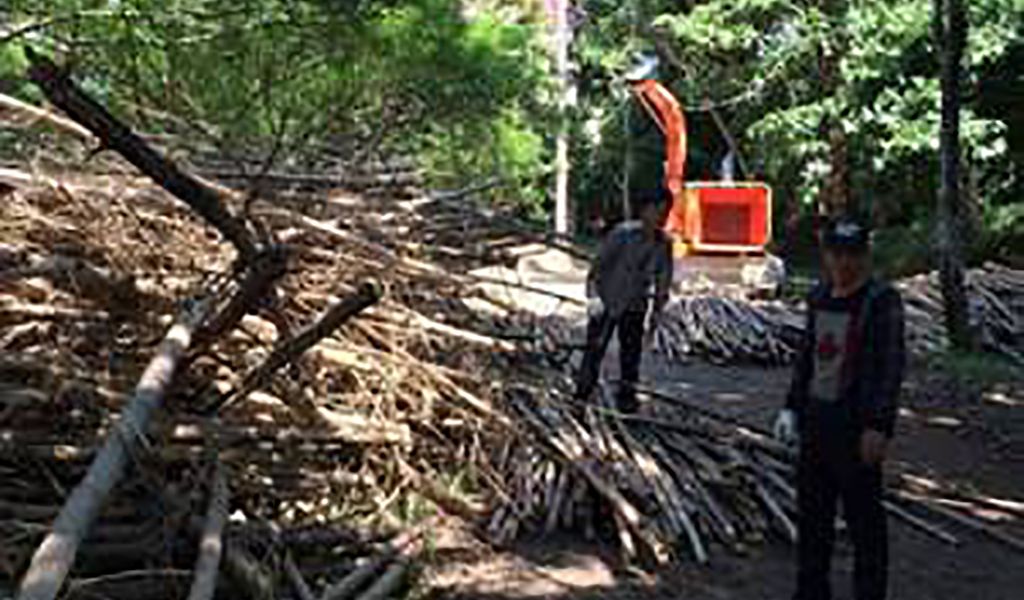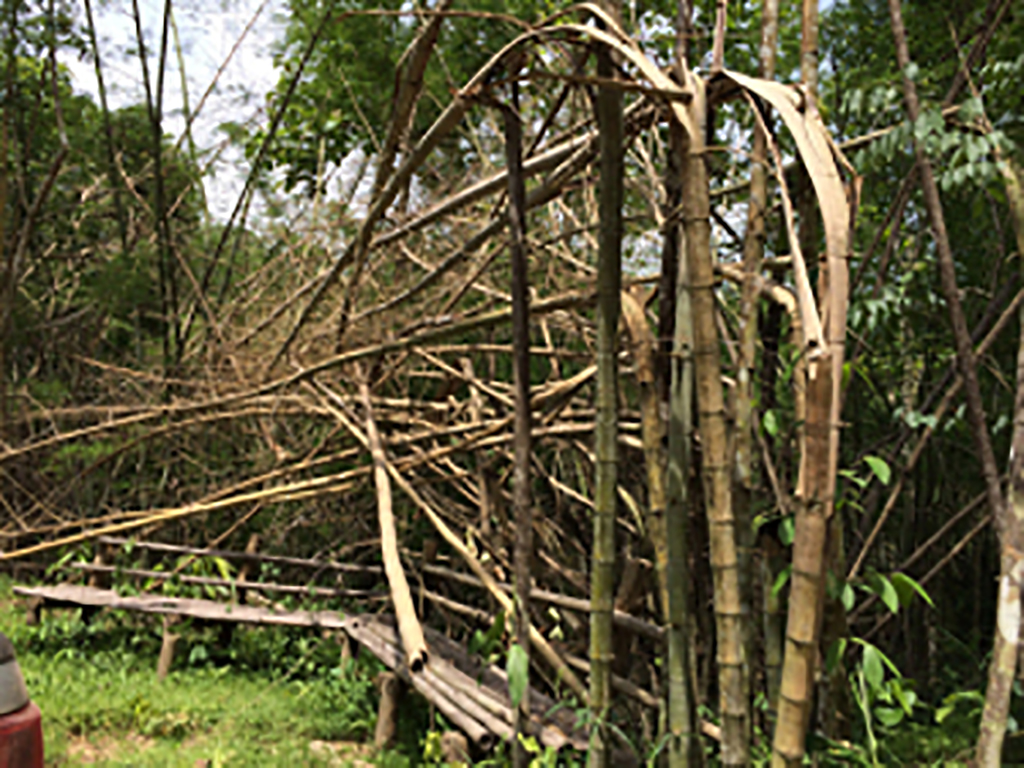Harvesting bamboo as a renewable energy source and improving livelihoods – a win-win solution for farmers in Lao PDR

RECOFTC’s ForInfo project is testing the feasibility of harvesting bamboo to produce renewable energy; the findings have been largely positive, though not yet finalized. Bamboo must prove to be competitive with current prices of rice husk, which is currently the main source for biomass-based power generation in Thailand. But beyond the economic aspects, it is also important to consider the gains that could potentially be made: furthering a green economy while simultaneously improving local people’s livelihoods.
In Bokeo, Lao PDR, as in many northern Lao provinces, farmers are faced with an overabundance of bamboo caused by short cycle shifting cultivation. The problem: bamboo is a plant species that can cause two severe environmental issues. During dry season, bamboo sparks easily and fuels forest fires, which release stored carbon into the atmosphere, exacerbating global warming. Moreover, as an early succession weed, it out-competes long-lived tree species which act as long-term carbon stocks that help mitigate climate change by storing carbon. Ridding potential forest land of invasive bamboo is on its own a dual-environmental gain.

But two additional gains – one environmental, one socio-economic – can be made if the harvested bamboo is then converted into chips and sold for biomass power generation.
Across the Mekong River from Houay Xai, there is a potential at least seasonal demand for bamboo chips at biomass power plants in replacement or in addition to rice husk and other biomass sources. Once a biomass power plant is in operation, a steady supply of biomass – ideally with a high calorific value – is required to sustain continuous electricity generation and efficient use of plant capacities. Growing shortages and price increases of available and suitable biomass resources in Thailand have led to several power plants closing down operations. What is thus needed now to sustain this high in demand supply of energy is a reliable and steady supply – possibly even in a mix of products – of renewable energy biomass resource. If local farmers are able to access this market, they would be able to greatly improve their financial resources; in doing so, they would also help create the basis for a green economy. Why not let the bamboo burn in a place where it could be to everybody’s benefit?
It is also important to note that this development would greatly diversify and improve the farmers’ existing income opportunities, as well as sustain the forests that the farmers use to access forest products for subsistence consumption. Connecting the farmers to a trans-boundary biomass supply chain would allow them to create a long-term sustainable source of income and greatly improve their livelihoods, while also helping restore forests to their full potential and help mitigate climate change in the process.
So far RECOFTC has only tested the feasibility of improving farmers’ role in the raw material supply and primary processing. An evolving cross-boundary supply will require further capacity development and private sector cooperation. Moreover, a strong commitment by governments, communities and the private sector is necessary to sustain existing and create new forest-based livelihood options in a transient landscape and region exposed to extremely quick and dynamic changes in agricultural economies dominated by powerful market actors to its north and south. It will thus also be important to find further higher value products and market opportunities for the abundant bamboo raw material while also addressing existing regulatory barriers restricting the utilization, processing and exportation of the resources.
About ForInfo
Since 2011, RECOFTC, with funding from the Ministry of Foreign Affairs of Finland, has been working on the ForInfo project, which aims to provide local people with better access to markets for forest products and environmental services through clearer and more accurate information about their forest resources.
Read more about ForInfo here

